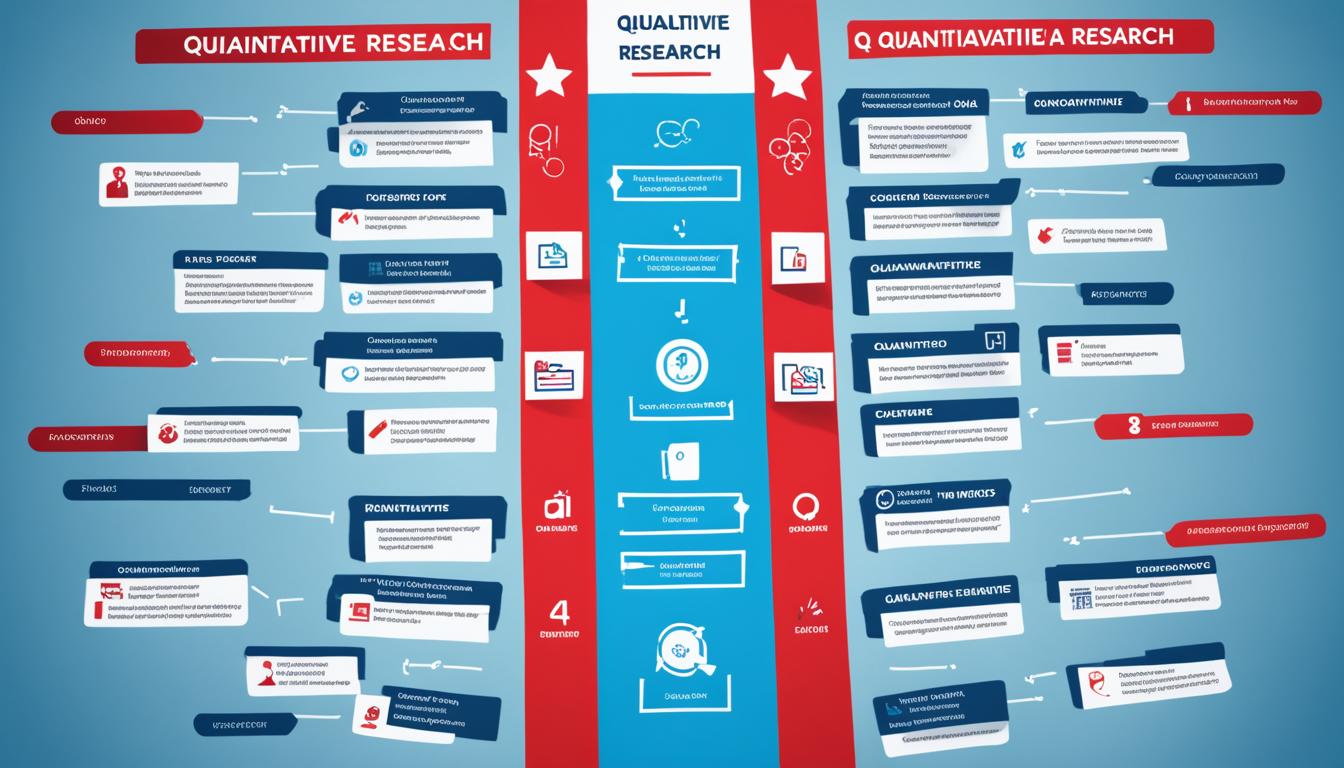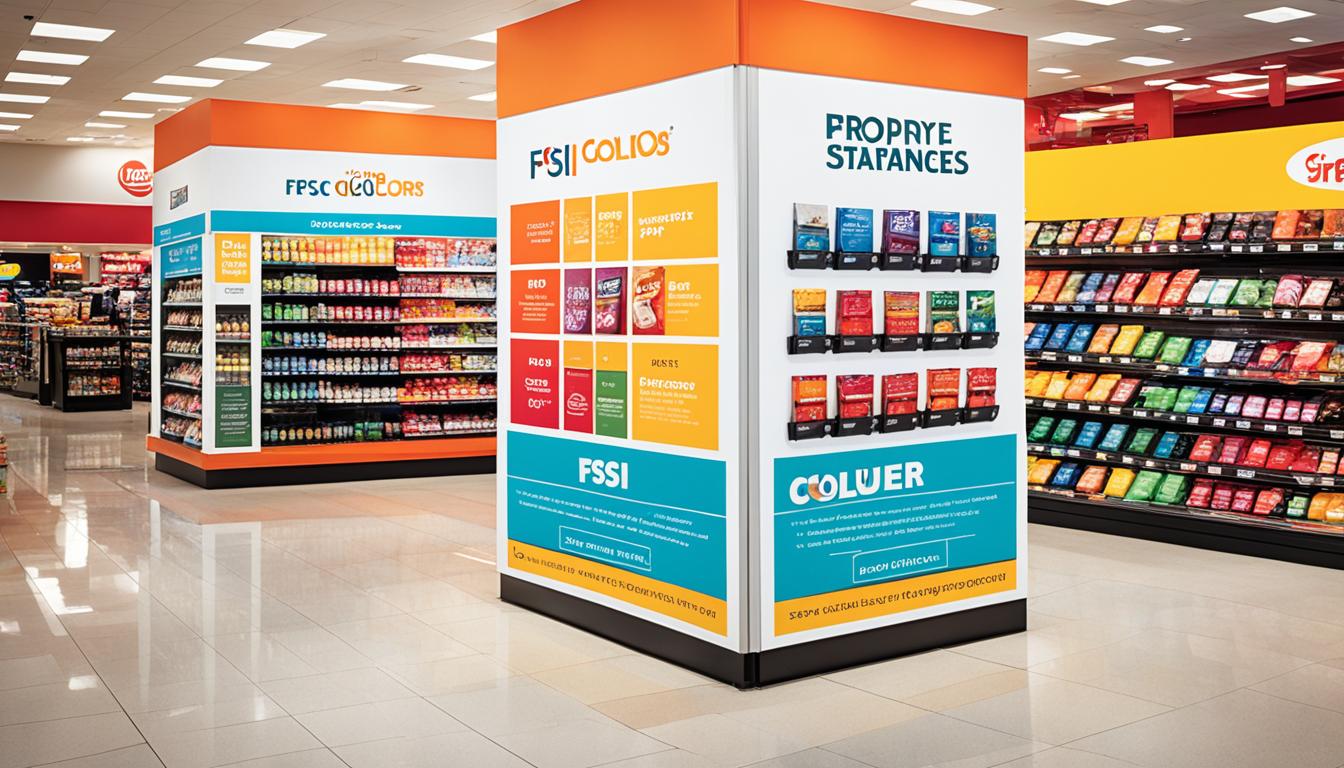Welcome to our in-depth analysis of Listerine’s marketing strategy in the oral care industry. In this case study, we will delve into the innovative tactics and successful campaigns that propelled Listerine to the forefront of the mouthwash market. From its unlikely beginnings as a general antiseptic to its transformation into a household name, we will explore how Listerine strategically positioned itself as the go-to solution for fresh breath.
In the early 20th century, Listerine was primarily known for its antiseptic properties, used for various purposes including cleaning floors. However, the company recognized the need to pivot and address a common problem that affected many individuals: bad breath. In the 1920s, Listerine underwent a remarkable repositioning effort, introducing the term ‘halitosis’ to redefine the product and create a sense of urgency among consumers.
This ingenious pivot not only changed the perception of Listerine but also revolutionized the oral care industry. By crafting a new narrative around bad breath and positioning Listerine as the ultimate solution, the company successfully rebranded itself and captured the attention of consumers worldwide. This strategic move propelled Listerine to unprecedented heights, resulting in a remarkable surge in profits and market dominance.
Key Takeaways
- Listerine’s marketing strategy included repositioning the product from a general antiseptic to a solution for bad breath
- The introduction of the term ‘halitosis’ created a sense of urgency among consumers
- Listerine’s rebranding efforts led to a significant increase in profits and market presence
- Strategic positioning and narrative crafting played a crucial role in shaping consumer perception
- The Listerine case study offers valuable insights into the power of effective marketing and rebranding in the oral care industry
The Unlikely Beginning of Listerine
In the early 20th century, Listerine had a rather unexpected start. Originally, it was known as a general antiseptic primarily used for cleaning floors and other household purposes. During this time, the idea of Listerine being associated with fresh breath or personal hygiene was far from anyone’s mind.
At that time, Listerine’s antiseptic properties made it popular for a variety of uses, including disinfecting wounds and even cleaning surgical instruments. People were unaware of its potential in the realm of oral care.
However, fate had different plans for Listerine. The journey from being a cleaning agent to a household name in oral care was just beginning.
The Reinvention of Listerine
As time went on, the makers of Listerine realized the need for a new direction. They recognized the vast potential of their product beyond its traditional uses and sought to explore alternative markets.
Eventually, a revolutionary idea was born: to reposition Listerine as a solution to the common problem of bad breath. This marked the beginning of a significant shift in marketing strategy that would change the course of the brand forever.
Stay tuned to learn more about Listerine’s ingenious pivot in the 1920s and how it transformed the company from a humble antiseptic into a trailblazer in the world of oral care.
The Ingenious Pivot of the 1920s
In the 1920s, Listerine embarked on a remarkable journey of repositioning and reinvention. The company recognized the pressing need to address the pervasive problem of bad breath and embraced a bold strategy to position Listerine as the go-to solution. This strategic decision laid the foundation for the brand’s transformation and propelled it into the thriving oral care industry.
At the heart of Listerine’s repositioning was the introduction of the term ‘halitosis.’ By using this medical-sounding term to describe bad breath, Listerine effectively created a sense of urgency and need among consumers. The mere mention of halitosis evoked concern and prompted individuals to seek out a solution, making Listerine the natural choice.
The power of this pivot cannot be overstated. Listerine, previously known primarily for its general antiseptic properties, now became synonymous with combating halitosis and maintaining fresh breath. The repositioning not only transformed Listerine’s image but also raised awareness about the importance of oral hygiene and the potential social ramifications of bad breath.
The rebranding efforts brought about a paradigm shift in consumer perception. Listerine, once seen as a utilitarian household product, emerged as a personal care essential. The product’s association with halitosis elevated its status and garnered trust among consumers, who now turned to Listerine as the reliable solution to their bad breath woes.
This repositioning campaign was a masterstroke in marketing innovation. By recognizing and addressing a common problem, Listerine tapped into a consumer need that hadn’t been fully capitalized on before. The company’s strategic pivot not only altered the trajectory of the brand but also forever changed the oral care industry.
Reshaping Consumer Behavior
With its ingenious pivot, Listerine not only revolutionized its own brand image but also reshaped consumer behavior. The introduction of halitosis as a medical condition prompted individuals to view bad breath as a serious concern rather than a nuisance.
Listerine’s marketing campaigns highlighted the importance of oral health and positioned their product as an essential component of a daily hygiene routine. Consumers began to seek out Listerine not only for a minty fresh breath but as a means of maintaining a healthier mouth.
Industry Impact
The impact of Listerine’s repositioning reverberated across the oral care industry. Competitors scrambled to follow suit, recognizing the power of addressing bad breath as a central messaging point. Listerine’s success propelled the industry towards a greater emphasis on oral health and hygiene, benefiting consumers in the long run.
The repositioning of Listerine in the 1920s serves as a prime example of a brand’s ability to adapt, innovate, and reshape its identity. By identifying and addressing a common problem, Listerine successfully tapped into consumer needs, reshaped perceptions, and achieved remarkable success in both the marketplace and the minds of consumers.
Crafting a New Narrative
By redefining bad breath as a medical condition, Listerine strategically positioned itself as an essential product for personal hygiene. This ingenious move not only transformed Listerine’s product positioning but also created a compelling narrative that resonated with consumers.
Recognizing that bad breath was a common problem faced by many, Listerine seized the opportunity to portray it as a medical condition known as ‘halitosis’. This shift in perspective not only elevated the importance of addressing bad breath but also positioned Listerine as the go-to solution. By reframing bad breath as a medical concern, Listerine effectively capitalized on the consumer’s desire for a remedy.
The marketing genius behind this repositioning lay in the creation of a new narrative. Listerine successfully transformed its image from a mundane antiseptic to a product essential for personal hygiene. The introduction of ‘halitosis’ as a medical condition added legitimacy to the need for Listerine, attracting consumers who were previously unaware of the product’s potential.
This strategic maneuver allowed Listerine to expand its market and reach a wider audience. It became more than just a mouthwash; it became a symbol of freshness, confidence, and oral well-being.
The Impact: A Remarkable Surge in Profits
The strategic repositioning of Listerine not only transformed its market presence but also resulted in a remarkable surge in profits. Within a span of seven years, Listerine experienced an astounding increase of 4,000% in profits, catapulting the brand to new heights of success in the oral care industry.
This significant growth in profits can be attributed to the strategic shift in consumer perception that Listerine was able to achieve. By redefining bad breath as a medical condition known as halitosis, Listerine successfully positioned itself as the go-to solution for fresh breath and oral hygiene.
This shift in consumer perception led to increased market demand and a growing customer base. As Listerine became synonymous with fighting bad breath, consumers began to view the brand as a trusted authority in oral care. This newfound trust resulted in higher sales and greater market share for Listerine.
The surge in profits also allowed Listerine to invest significantly in marketing initiatives, further solidifying its market presence. The increased revenue enabled the brand to launch extensive advertising campaigns, sponsor oral care events, and engage with consumers through various channels.
Consumer Perception and Brand Loyalty
Consumer perception played a crucial role in Listerine’s profit surge. By positioning itself as the solution to a common oral concern, Listerine was able to establish a strong connection with consumers. The brand’s commitment to quality and effectiveness further reinforced consumer trust and loyalty.
Listerine’s success in changing consumer perception can be attributed to effective marketing strategies and consistent product performance. The brand’s innovative advertising campaigns that highlighted the negative consequences of bad breath, paired with testimonials from satisfied customers, resonated with consumers and encouraged them to choose Listerine as their preferred mouthwash brand.
The remarkable surge in profits not only showcased the success of Listerine’s repositioning efforts but also served as a testament to the brand’s ability to meet consumer needs effectively. By understanding consumer desires and providing a solution that addressed a common problem, Listerine was able to establish itself as a leader in the oral care industry and experience unprecedented financial growth.
The Power of Perception
The success of Listerine’s marketing strategy highlights the significant role of strategic positioning in influencing consumer behavior and perception. By strategically shifting the narrative around bad breath and positioning Listerine as a solution, the company was able to change how consumers viewed the product and perceive its importance in their daily lives.
The strategic positioning of Listerine involved crafting a compelling message that resonated with consumers and addressed their oral care needs. By emphasizing the importance of fresh breath and positioning Listerine as a trusted solution, the company tapped into consumer motivations and desires for improved confidence and social acceptance.
This strategic approach to positioning also took into account consumer behavior patterns. Listerine recognized that consumers are more likely to purchase products that align with their self-perception and identity. By positioning Listerine as an essential part of a healthy and confident lifestyle, the company was able to create a strong connection between the brand and consumers.
Furthermore, Listerine’s strategic positioning efforts were supported by targeted marketing campaigns that reinforced the desired perception among consumers. Creative advertisements, testimonials, and endorsements from trusted individuals contributed to shaping the perception that Listerine was a reliable and effective solution for fresh breath.
The power of perception can be observed in the results of Listerine’s marketing strategy. By strategically positioning the brand and shaping consumer perceptions, Listerine was able to establish itself as a leader in the oral care industry and gain a significant market share.
Overall, Listerine’s success exemplifies how strategic positioning can influence consumer behavior and perception. By understanding consumer motivations, crafting a compelling message, and supporting it with targeted marketing efforts, companies can shape how their products are perceived and gain a competitive edge in the market.
Lessons in Marketing Strategy
The Listerine case study provides valuable marketing insights for product marketing managers. Through the lens of Listerine’s rebranding and strategic positioning, professionals in the industry can learn important lessons about market dynamics and effective marketing tactics.
One of the key takeaways from the Listerine case study is the power of rebranding. Listerine’s transformation from a general antiseptic to a product specifically targeted at addressing bad breath shows the potential impact of repositioning a brand. By understanding market needs and reimagining their product’s narrative, Listerine successfully connected with consumers who sought a solution to their breath concerns.
The Role of Strategic Positioning
Strategic positioning played a crucial role in Listerine’s success story. By recognizing the opportunity to address bad breath as a medical condition, Listerine strategically positioned itself as the go-to solution for this common problem. This shift in strategic positioning allowed the brand to redefine itself in the minds of consumers and differentiate itself from competitors. Marketers can learn from Listerine’s example and leverage strategic positioning to stand out in competitive markets.
Furthermore, Listerine’s case study showcases the importance of understanding market needs. By identifying a prevalent issue like bad breath and developing a product to solve it, Listerine tapped into a significant consumer demand. This understanding of market needs enabled Listerine to create a unique value proposition and gain a competitive advantage within the oral care industry.
A Data-Driven Approach
Effective marketing strategies are often rooted in extensive research and data analysis. The case study of Listerine’s marketing strategy highlights the importance of conducting thorough market analysis, including competitor research and consumer behavior insights. By utilizing data-driven insights, Listerine was able to make informed decisions, develop targeted advertising campaigns, and strengthen its position in the market.
Marketing professionals can draw inspiration from Listerine’s success story and apply these lessons to their own campaigns. By understanding market needs, embracing rebranding, and leveraging strategic positioning, marketers can unlock new opportunities for their brands and drive business growth.
Market Segmentation Strategies
In addition to its successful repositioning efforts, Listerine implemented strategic market segmentation strategies to effectively target specific consumer groups. By gaining a deep understanding of the diverse needs and preferences of different segments, Listerine was able to develop tailored advertising campaigns and consumer engagement initiatives.
Understanding the Diverse Consumer Landscape
To effectively implement market segmentation, Listerine conducted thorough research to identify the various consumer segments within the oral care industry. This involved analyzing demographic data, consumer behaviors, and psychographic characteristics to uncover distinct groups with unique needs and preferences.
Targeted Advertising Campaigns
Once Listerine identified its target consumer segments, the company developed targeted advertising campaigns that resonated with each group’s specific interests and motivations. By crafting messages that addressed their pain points and showcased the benefits of using Listerine, the brand was able to establish a strong connection with these consumers.
Customized Consumer Engagement Initiatives
Listerine recognized that engaging with consumers on a personal level is crucial for building brand loyalty and satisfaction. To maximize consumer engagement, the company implemented customized initiatives tailored to each segment’s preferences. This included personalized emails, loyalty programs, and interactive social media campaigns.
By subdividing the market into manageable segments and tailoring marketing efforts to each group, Listerine saw significant improvements in consumer engagement and brand loyalty. The adoption of market segmentation strategies allowed Listerine to effectively reach and connect with its target audience, resulting in increased sales and market share.
| Benefits of Market Segmentation Strategies | Examples |
|---|---|
| Enhanced targeting | Creating separate advertising campaigns for different consumer groups based on their preferences. |
| Improved consumer satisfaction | Implementing personalized consumer engagement initiatives to cater to individual needs. |
| Increased brand loyalty | Delivering messages that resonate with specific consumer segments, fostering a deeper connection with the brand. |
| Higher sales and market share | Reaching and capturing the attention of diverse consumer groups, resulting in increased purchases and market presence. |
Competitive Analysis in Oral Care
In addition to its strategic repositioning efforts, Listerine’s marketing strategy also encompassed comprehensive competitive analysis within the oral care industry. By conducting thorough research on market trends, competitor strategies, and consumer preferences, Listerine was able to maintain a competitive edge and continuously innovate its marketing initiatives.
Studying Market Trends
Listerine recognized the importance of keeping a pulse on market trends within the oral care industry. Through rigorous analysis of market data and industry reports, the company gained valuable insights into the evolving preferences and needs of consumers. This knowledge enabled Listerine to adapt its marketing strategies and develop products that catered to emerging trends, ensuring its continued relevance in the market.
Analyzing Competitor Strategies
Competitive analysis played a vital role in Listerine’s marketing approach. By studying the strategies employed by its competitors, Listerine gained a deeper understanding of the competitive landscape, identifying both strengths and weaknesses. This valuable knowledge allowed Listerine to refine its own marketing initiatives and differentiate itself from competing brands, ensuring a unique selling proposition in the oral care industry.
Understanding Consumer Preferences
Consumer preferences are constantly evolving, and Listerine recognized the importance of understanding these preferences to effectively market its products. Through surveys, focus groups, and data analysis, Listerine gained valuable insights into the desires and needs of its target audience. This understanding enabled the company to tailor its marketing messages and product offerings to align with consumer preferences, enhancing its competitive advantage in the oral care market.
By conducting thorough competitive analysis and staying ahead of market trends and consumer preferences, Listerine solidified its position as a leading brand in the oral care industry. The company’s commitment to continuous research and innovation has allowed it to consistently deliver effective marketing campaigns and products that resonate with consumers.
Conclusion
The evolution of Listerine’s marketing strategy exemplifies the incredible power of strategic thinking and innovation in reshaping a brand’s identity and market position. By redefining the perception of bad breath and strategically positioning itself as a solution, Listerine successfully transformed from a mundane antiseptic to an essential oral care product. This shift in strategy led to a remarkable surge in profits and solidified Listerine’s position as a leader in the mouthwash market.
Marketers can draw valuable insights from Listerine’s journey. It underscores the importance of creative thinking, a deep understanding of market trends, and the ability to leverage strategic positioning for success in the dynamic field of marketing. Brand evolution is crucial in capturing the attention of consumers and staying ahead in a competitive industry.
Embracing marketing innovation is essential for brands to stay relevant and responsive to changing consumer needs. Listerine’s case study serves as a reminder that continuous assessment, adaptation, and reinvention are key ingredients to a successful marketing strategy. By staying attuned to the evolving needs and preferences of consumers, brands can create a lasting impact and drive growth in an ever-changing market landscape.






